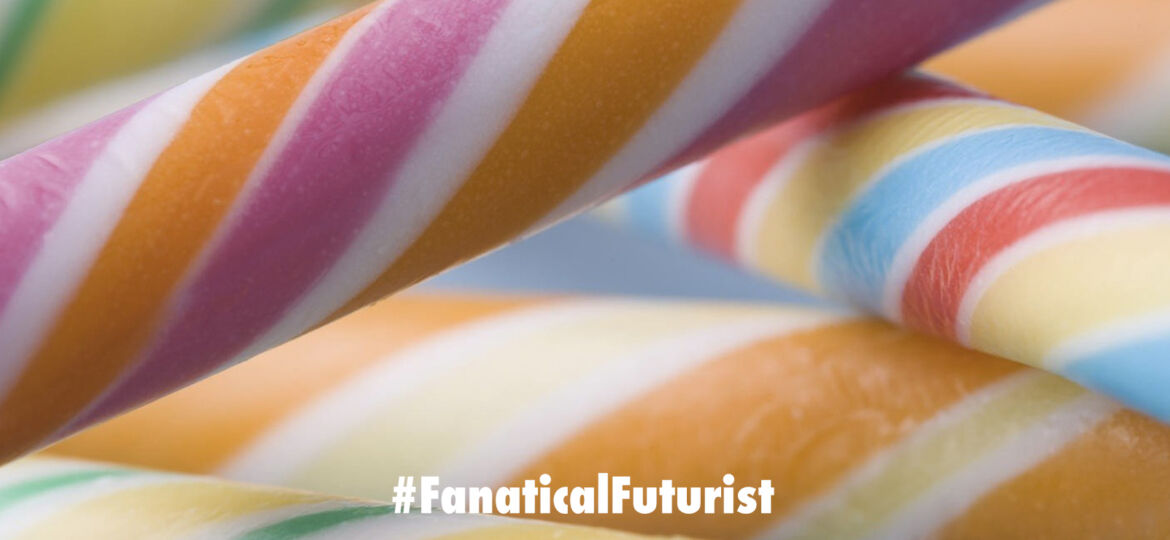
WHY THIS MATTERS IN BRIEF
Plastic has turned into the scourge of the environment, and companies are tripling their efforts to find viable environmentally friendly alternatives.
Society is producing more waste plastic than ever before and it’s polluting our oceans and contaminating our drinking water. By all accounts by 2050 there could be more waste plastic than fish in the sea, and that’s before we shine a light on the fact that more than 80% of tap water may contain microplastics, so as you can see plastic is now a global problem, and out love affair with the “miracle” material seems to be coming to an abrupt end.
While programs and initiatives like the New Plastics Economy are trying to reverse this trend by encouraging the plastics industry to design plastic products that can be reused others are trying to change the very nature of plastic itself.
Recently scientists from the University of Bath in the UK successfully created a plastic that doesn’t use harmful chemicals during its manufacturing process, and is biodegradable and scratchproof. But the really good news is that it’s made from nothing more than common sugar and carbon dioxide.
In order to make their new plastic the team behind the new breakthrough added carbon dioxide to a naturally occurring sugar called Thymidine at low pressures and at room temperature to create a new form of Polycarbonate, a tough type of plastic that’s most commonly used to make drinks bottles, lenses, and scratch resistant coatings for everything from CD’s to smartphones.
Polycarbonates are typically made from petrochemicals though and ordinarily aren’t biodegradable which adds millions of extra tons to our already huge mountains of plastic waste.
Unlike petroleum based polycarbonates though the new plastic created by the team breaks down naturally. Biodegradable plastics are nothing new, but previous attempts at developing them have been heavily criticised by industry experts. For example, last year the UN Environment Programme’s chief scientist Jacqueline McGlade said they were a “false solution” as many would only biodegrade in temperatures of 50C or more. However, the new plastic doesn’t depend on high temperatures. Instead, it can be degraded back into its constituent components, sugar and carbon dioxide, using only the enzymes found in common soil bacteria.
Another major advantage of using sugar and carbon dioxide to make a polycarbonate is the absence of the highly toxic chemicals that are often used in the manufacturing process. Many polycarbonates contain Bisphenol-A (BPA), which when used in bottles and containers can leach into food and drinking water.
The US Centers for Disease Control and Prevention recently found that 93% of people it tested had detectable levels of BPA in their urine, and BPA’s have been linked to reproductive problems, diabetes and autism, and have subsequently been banned in the manufacture of baby bottles.
Again, sugars too have been used to create non-BPA polycarbonates before, but the manufacturing process has previously required use of the highly toxic chemical Phosgene which was used as a chemical weapon in World War I and was responsible for 85% of the deaths caused by gas attacks.
“Our process uses carbon dioxide instead of the highly toxic chemical Phosgene, and produces a plastic that is free from BPA,” said Dr Antoine Buchard, Whorrod Research Fellow at the University of Bath’s Department of Chemistry. “So not only is the plastic safer, but the manufacture process is cleaner and more environmentally friendly too.”
Also, by selecting Thymidine as the sugar used to create the biodegradable plastic, the university’s scientists may also have found a medical application for it.
“Thymidine is one of the units that makes up DNA,” said Georgina Gregory, a PhD student and lead author of the research paper. “Because it is already present in the body, it means this plastic will be bio-compatible and can be used safely for tissue engineering applications.” A field that’s on the rise, especially as we begin to 3D print complex organs like hearts, which need specially designed scaffolds to help them hold their shape and prevent them from collapsing into mush, in the lab.
While we are likely still a long way from seeing the removal of all harmful plastics from our shelves for greener cleaner alternatives, it’s now clear that there is a growing momentum in the scientific community to solve the “plastic crisis,” and innovative solutions like this one are just the beginning, and they’re coming not a moment too soon.
















